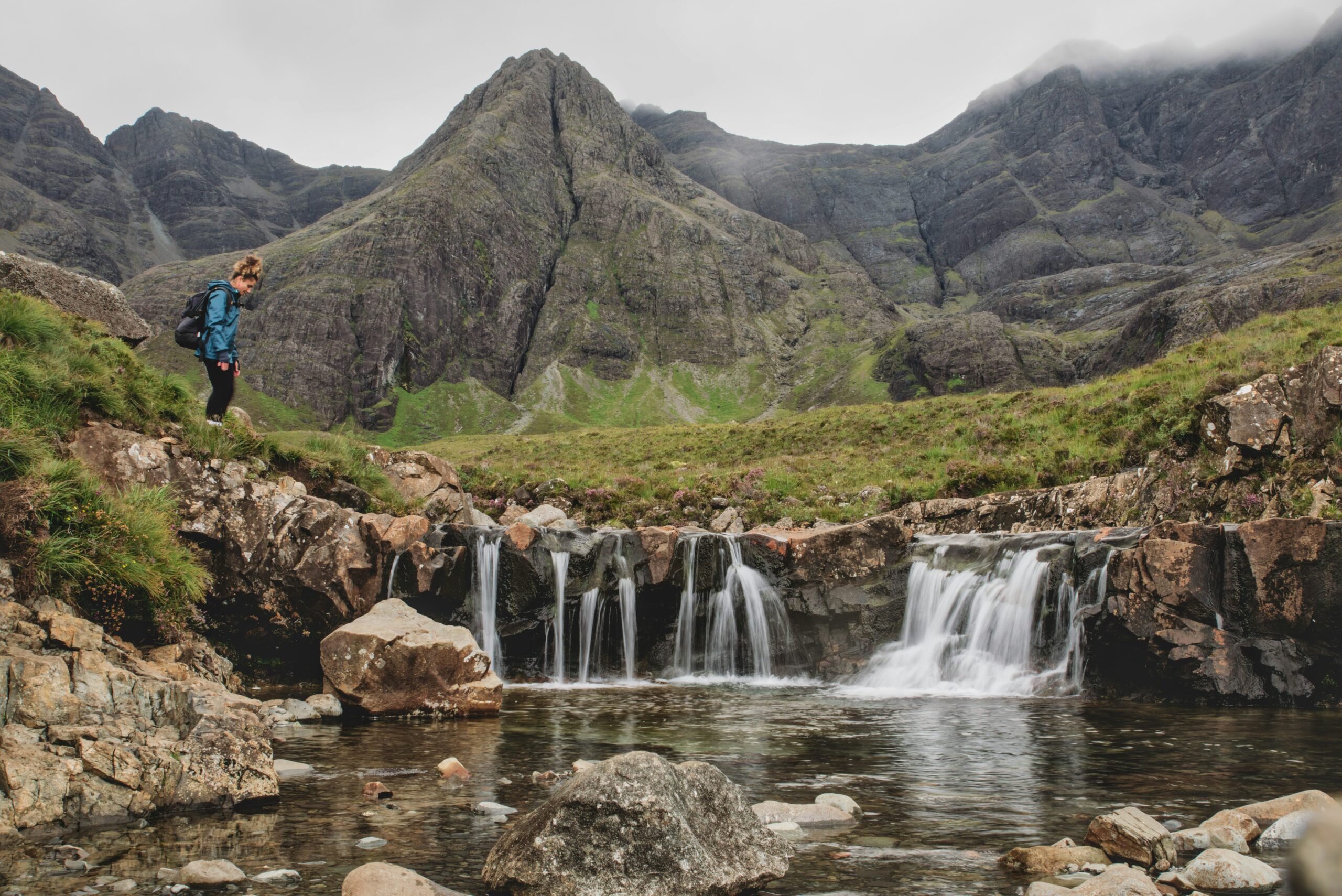The UK offers some of the most diverse and accessible hiking opportunities in the world. From towering mountains in Scotland to tranquil valleys in Wales and historic trails in England, there is something for everyone. With centuries of history, diverse ecosystems, and dramatic scenery, hiking in the UK is as much about immersion in nature as it is about connecting with the stories of the land.
Hiking in the UK isn’t just a physical activity—it’s an experience that invites you to explore:
- Historic sites, including ancient Roman paths and medieval pilgrim trails.
- Diverse ecosystems, from coastal cliffs to dense forests and rolling countryside.
- Year-round beauty, with trails that bloom in spring, shine in summer, and glow in autumn.
Whether you’re a seasoned trekker or a casual stroller, this guide will help you uncover the best trails across the UK.
Top hiking locations
- Lake District National Park
- Cotswolds
- Peak District National Park
- South West Coast Path
- Snowdonia National Park
- Brecon Beacons National Park
- Cairngorms and the Scottish Highlands
- Dartmoor National Park
- Yorkshire Dales
- Hadrian’s Wall Path
- Pembrokeshire Coast Path
- Isle of Skye (Fairy Pools)
- Malvern Hills
- Norfolk Coast Path
- Glen Nevis and the Steall Waterfall
Top 15 Hiking Locations in the UK
1. Lake District National Park
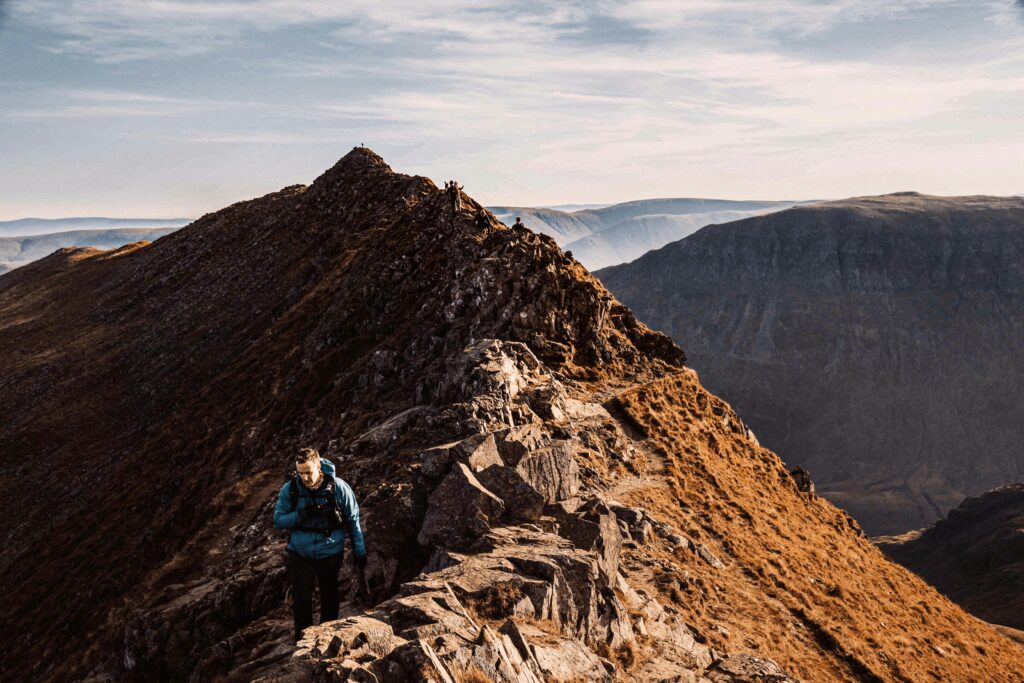
Summary: The Lake District is a hiker’s dream, offering a mix of tranquil lakes, lush valleys, and dramatic peaks. It’s home to England’s highest mountain, Scafell Pike, and has trails suited for both beginners and seasoned hikers.
- Difficulty level: Easy to challenging (trails range from short walks like Catbells to the technical Helvellyn via Striding Edge).
- What makes the walk unique: Iconic glacial lakes and fells that inspired literary greats like Wordsworth.
- Best time to go: Late spring to early autumn for vibrant scenery and good weather.
- Food/restaurants/amenities nearby: Try the Dog and Gun Pub in Keswick for hearty local fare or enjoy traditional cream tea at Ambleside.
- Travel/parking info: Parking is available at popular trailheads like Glenridding or Keswick. Arrive early to secure a spot.
- Travel recommendations: Base yourself in Keswick or Ambleside for easy access to trails and public transport options.
Cotswolds
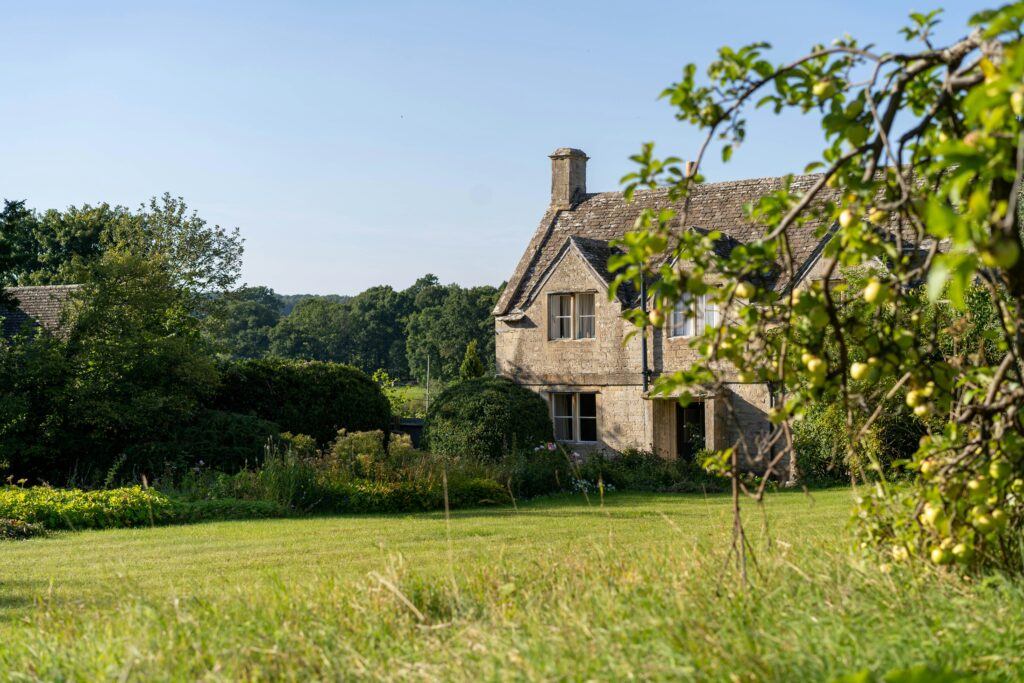
Summary: A gentle escape into quintessential English countryside, the Cotswolds features rolling hills, ancient woodlands, and charming villages filled with honey-colored stone cottages.
- Difficulty level: Easy to moderate (mostly rolling terrain with some steeper paths around Broadway).
- What makes the walk unique: The timeless charm of villages like Bourton-on-the-Water and Chipping Campden, combined with gentle meadows.
- Best time to go: Spring for blooming wildflowers or autumn for fewer crowds and golden landscapes.
- Food/restaurants/amenities nearby: Dine at The Wild Rabbit, a gastropub in Kingham, or enjoy local cheeses at a farmer’s market.
- Travel/parking info: Public car parks are available in villages like Broadway and Bourton-on-the-Water. Public transport is limited, so driving is recommended.
- Travel recommendations: Combine hikes with visits to historic sites like Blenheim Palace or nearby stately homes.
Peak District National Park
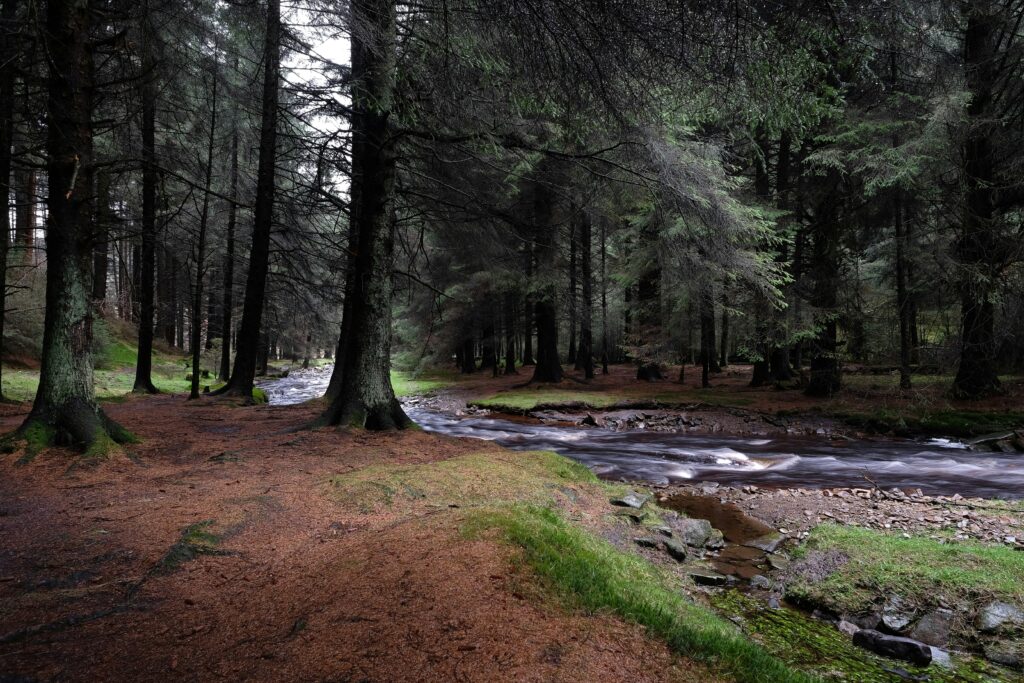
Summary: Known as the UK’s first national park, the Peak District offers a mix of limestone valleys, gritstone ridges, and historic trails like Kinder Scout, the site of the famous 1932 Mass Trespass.
- Difficulty level: Easy to challenging (Mam Tor is family-friendly; Kinder Scout involves steeper climbs and boggy terrain).
- What makes the walk unique: A stunning variety of landscapes and historical significance in Britain’s hiking heritage.
- Best time to go: Year-round; spring and summer provide the best weather for hiking.
- Food/restaurants/amenities nearby: Visit The Old Nags Head in Edale for a post-hike pint or The Yorkshire Bridge Inn near Ladybower Reservoir.
- Travel/parking info: Parking is available in Edale, Castleton, and Hope Valley. Spaces fill quickly during weekends.
- Travel recommendations: The Hope Valley line offers train access from Manchester and Sheffield, making it easy to reach without a car.
South West Coast Path
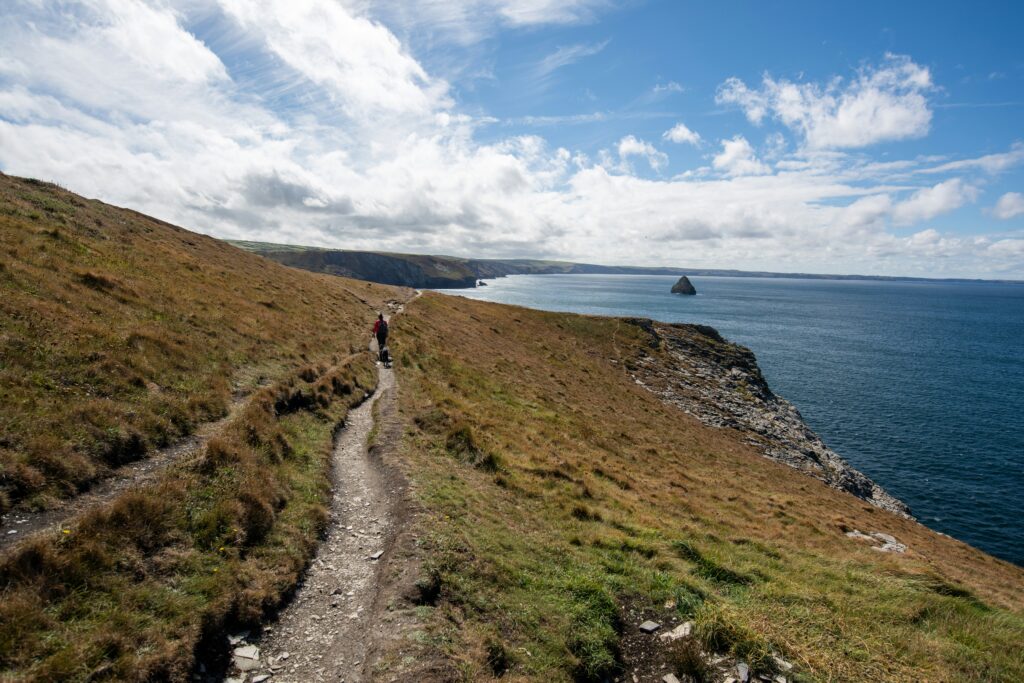
Summary: England’s longest National Trail, stretching 630 miles, this path hugs the dramatic southwestern coastline, showcasing rugged cliffs, golden beaches, and ancient geological formations.
- Difficulty level: Easy to strenuous (Sidmouth to Beer is manageable; Hartland Quay to Bude is more demanding).
- What makes the walk unique: UNESCO-listed Jurassic Coast with fossils, dramatic cliffs, and quaint seaside villages.
- Best time to go: Late spring to early summer for wildflowers and mild weather.
- Food/restaurants/amenities nearby: Enjoy fresh seafood at The Crab Shack in Teignmouth or traditional Cornish pasties along the trail.
- Travel/parking info: Parking is available at key trailheads, but spaces fill quickly in summer.
- Travel recommendations: Coastal buses connect many points along the trail, ideal for one-way hikes.
Snowdonia National Park
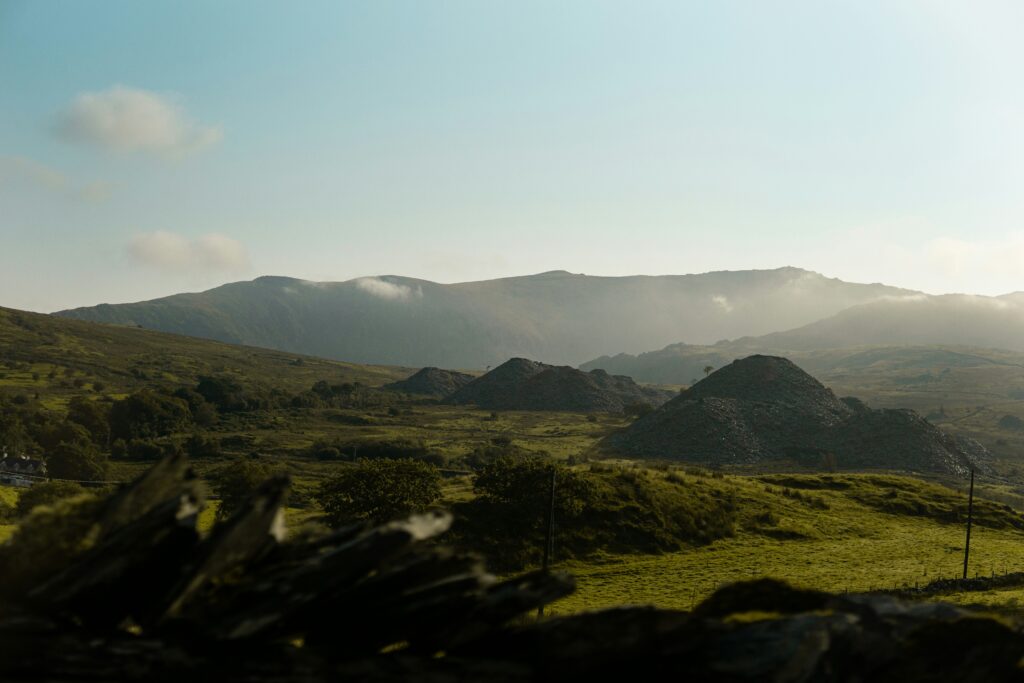
Summary: Snowdonia is Wales’ crown jewel, featuring rugged mountains, glacial lakes, and Welsh cultural heritage. Snowdon, the tallest peak in Wales, is the main attraction.
- Difficulty level: Moderate to challenging (Llanberis Path is beginner-friendly; Crib Goch is for experienced hikers).
- What makes the walk unique: Stunning views, Welsh folklore, and a variety of trails leading to the summit of Snowdon.
- Best time to go: May to September for good weather and extended daylight.
- Food/restaurants/amenities nearby: Stop by Pete’s Eats in Llanberis for a hearty post-hike meal.
- Travel/parking info: Parking at Pen-y-Pass is limited—book in advance or use park-and-ride shuttles.
- Travel recommendations: Stay in Llanberis or Betws-y-Coed for easy access to trails and local amenities.
Brecon Beacons National Park
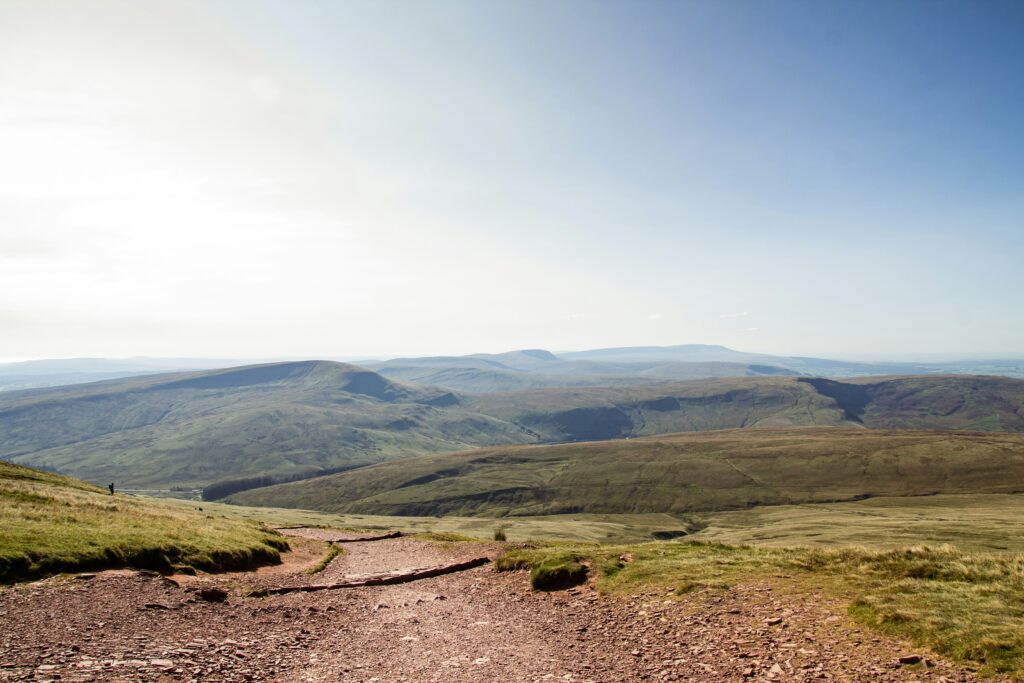
Summary: The Brecon Beacons are known for their rolling hills, open moorland, and dark skies, perfect for stargazing after a day of hiking.
- Difficulty level: Easy to moderate (Pen-y-Fan is suitable for most fitness levels).
- What makes the walk unique: Expansive views, tranquil countryside, and a network of cascading waterfalls.
- Best time to go: Late spring for lush greenery or autumn for vibrant colors.
- Food/restaurants/amenities nearby: Grab a bite at The Felin Fach Griffin, a cozy gastropub near Talgarth.
- Travel/parking info: Parking is available at popular trailheads like Pont ar Daf and Llyn y Fan Fach.
- Travel recommendations: Public buses serve some areas, but a car provides more flexibility.
Cairngorms and the Scottish Highlands
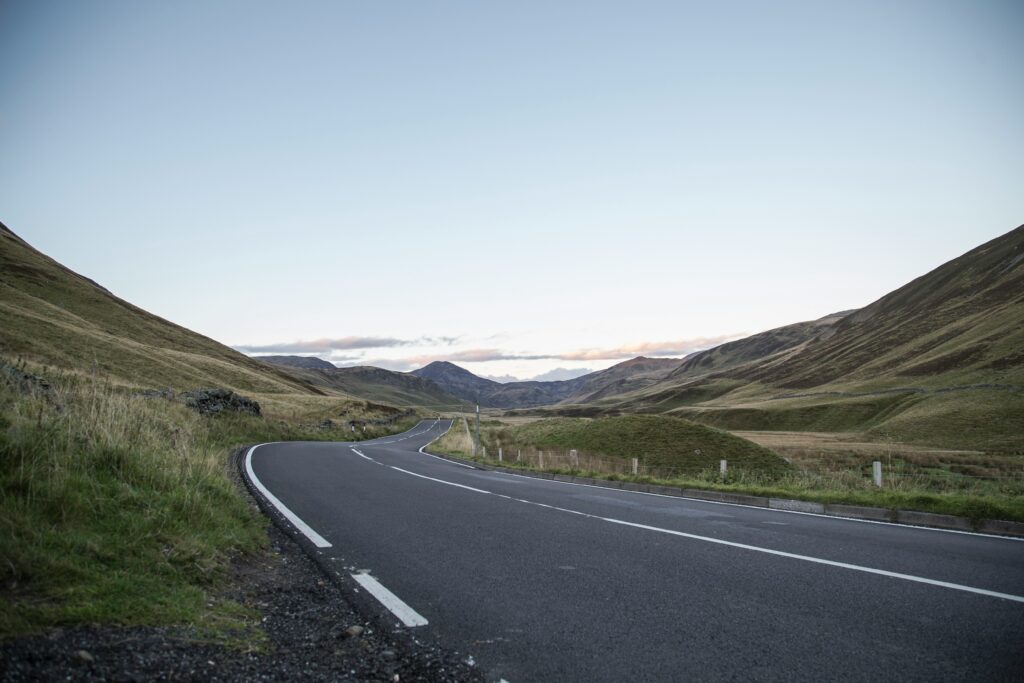
Summary: This wild, rugged region is a hiker’s paradise, offering dramatic peaks, ancient forests, and untamed beauty.
- Difficulty level: Moderate to strenuous (Ben Macdui and Cairn Gorm Plateau are challenging but rewarding).
- What makes the walk unique: Vast wilderness and opportunities to spot wildlife like red deer and golden eagles.
- Best time to go: Summer for long daylight hours or winter for snow-covered peaks (with proper equipment).
- Food/restaurants/amenities nearby: Sample Scottish delicacies at The Old Bridge Inn in Aviemore.
- Travel/parking info: Parking is available at Aviemore, a key gateway to the Cairngorms.
- Travel recommendations: The Caledonian Sleeper train connects the Highlands to London.
Dartmoor National Park
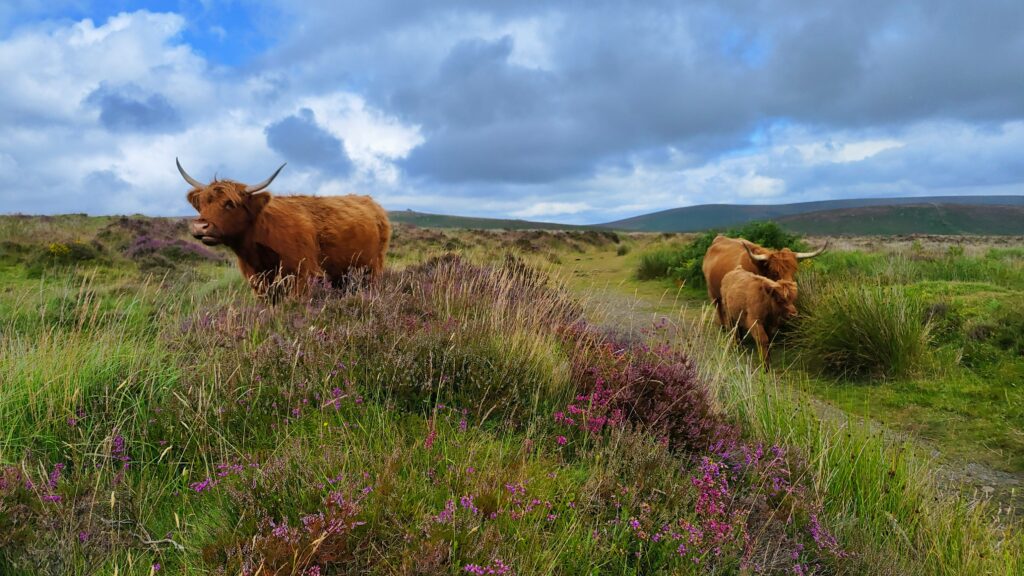
Summary: Dartmoor offers a unique mix of wild moorlands, ancient stone circles, and mystical forests like Wistman’s Wood.
- Difficulty level: Easy to moderate (Haytor Quarry Walk is suitable for beginners).
- What makes the walk unique: Rich history and a sense of timelessness, with tors offering stunning panoramas.
- Best time to go: Spring or autumn for mild weather and fewer crowds.
- Food/restaurants/amenities nearby: Stop by The Rugglestone Inn in Widecombe for a traditional meal.
- Travel/parking info: Parking is available near major trails like Haytor.
- Travel recommendations: Use local buses to access villages like Bovey Tracey.
Yorkshire Dales
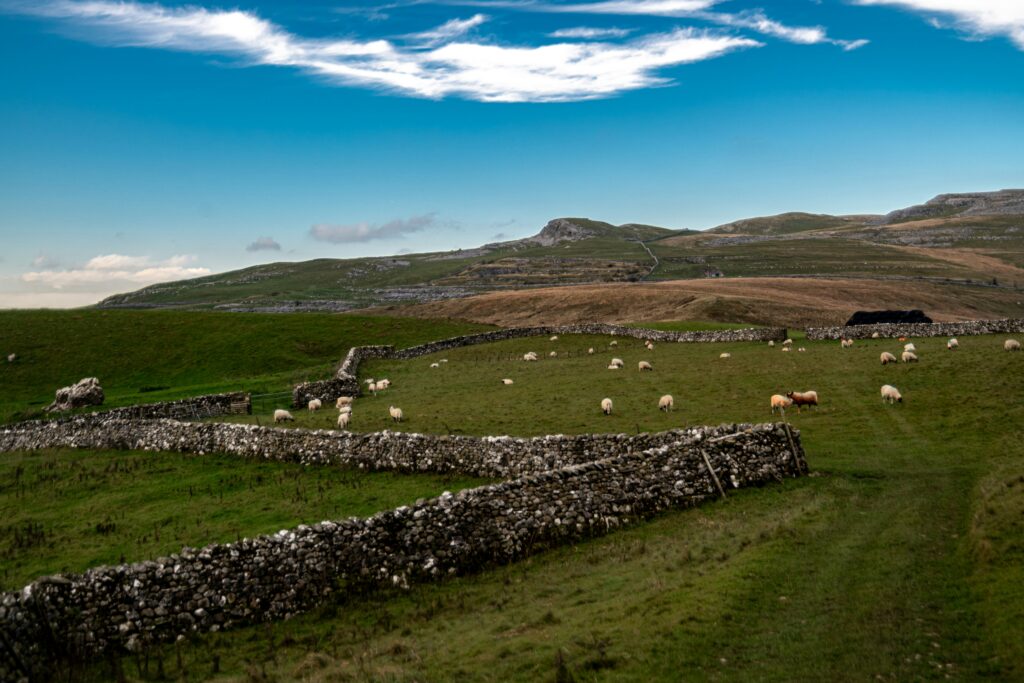
Summary: Known for its limestone pavements, quaint villages, and gentle rivers, the Yorkshire Dales is a serene hiking destination with dramatic features like waterfalls and caves.
- Difficulty level: Easy to moderate (trails like Malham Cove are accessible; the Three Peaks Challenge is demanding).
- What makes the walk unique: Limestone landscapes, dry-stone walls, and tranquil countryside atmosphere.
- Best time to go: Spring and summer for wildflowers or autumn for picturesque foliage.
- Food/restaurants/amenities nearby: Enjoy a meal at The Lister Arms in Malham or sample local cheeses at the Wensleydale Creamery.
- Travel/parking info: Parking is available in villages like Malham and Horton-in-Ribblesdale. Early arrival is recommended during peak times.
- Travel recommendations: Public transport is available, but a car offers more flexibility for exploring remote trails.
Hadrian’s Wall Path
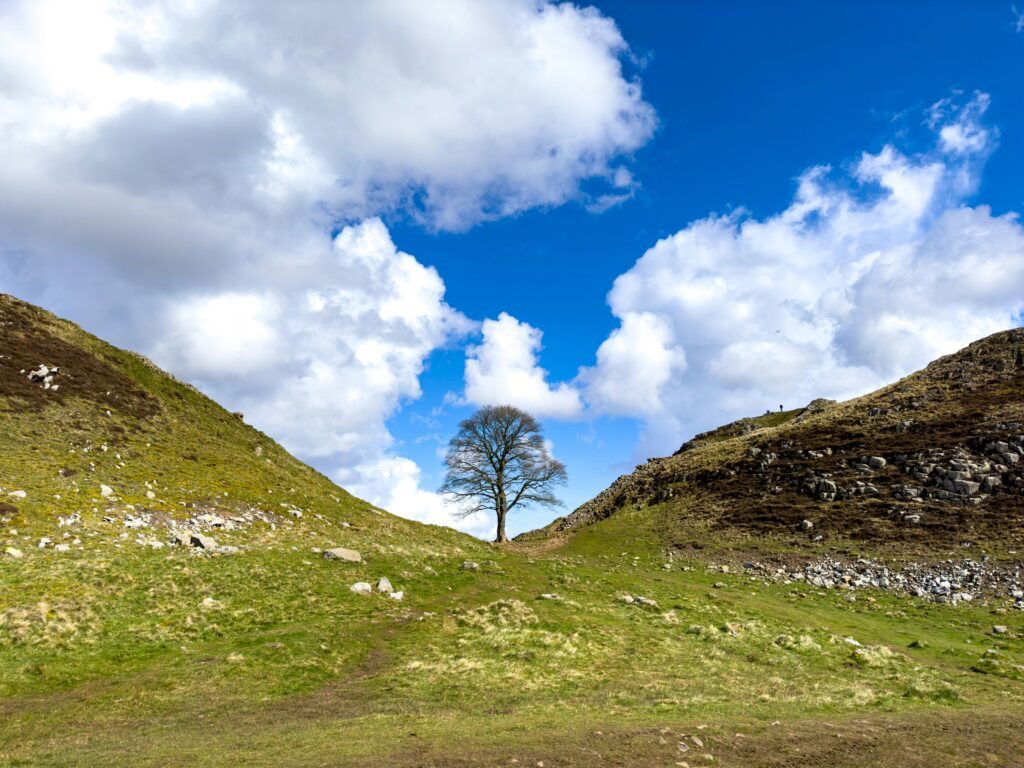
Summary: Following the historic Roman wall across northern England, this path combines history with breathtaking countryside vistas.
- Difficulty level: Moderate (sections like Steel Rigg are short but steep in parts).
- What makes the walk unique: Walk through history, passing Roman forts, milecastles, and the famous Sycamore Gap.
- Best time to go: Late spring or early autumn for mild weather and clear skies.
- Food/restaurants/amenities nearby: Stop at The Twice Brewed Inn near Steel Rigg for refreshments or local ales.
- Travel/parking info: Parking is available at trailheads like Housesteads Roman Fort and Chesters Fort.
- Travel recommendations: Guided tours or public transport can provide additional historical context and convenience.
Pembrokeshire Coast Path

Summary: A coastal paradise in Wales, this trail offers stunning sea views, golden beaches, and opportunities to spot puffins and seals.
- Difficulty level: Moderate to strenuous (rugged sections near Strumble Head require good fitness).
- What makes the walk unique: Dramatic cliffs, quaint fishing villages, and wildlife encounters.
- Best time to go: Late spring to early summer for blooming wildflowers and nesting seabirds.
- Food/restaurants/amenities nearby: Try seafood at The Shed Bistro in Porthgain or enjoy ice cream at Solva.
- Travel/parking info: Parking is available at visitor centers like St. David’s Head or Marloes Sands.
- Travel recommendations: Coastal buses are available, making it easy to plan one-way hikes.
Isle of Skye (Fairy Pools)
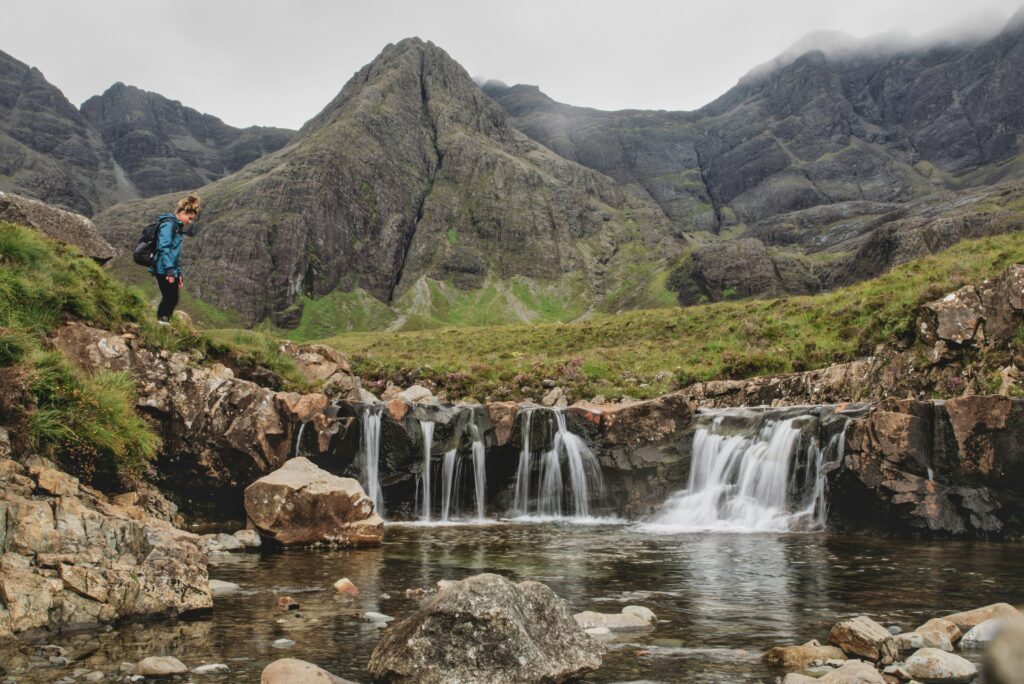
Summary: The Fairy Pools are crystal-clear waterfalls and rock pools set against the dramatic backdrop of the Cuillin Hills.
- Difficulty level: Easy to moderate (a short trail, but rocky terrain requires care).
- What makes the walk unique: Ethereal pools with stunning colors and views of the Cuillins.
- Best time to go: Summer for the best weather; autumn for a quieter experience.
- Food/restaurants/amenities nearby: Visit The Old Inn at Carbost for hearty meals or sample whisky at the nearby Talisker Distillery.
- Travel/parking info: Parking is limited at the Fairy Pools car park—arrive early to secure a spot.
- Travel recommendations: A car is essential to explore the island, but local bus services are available.
Malvern Hills
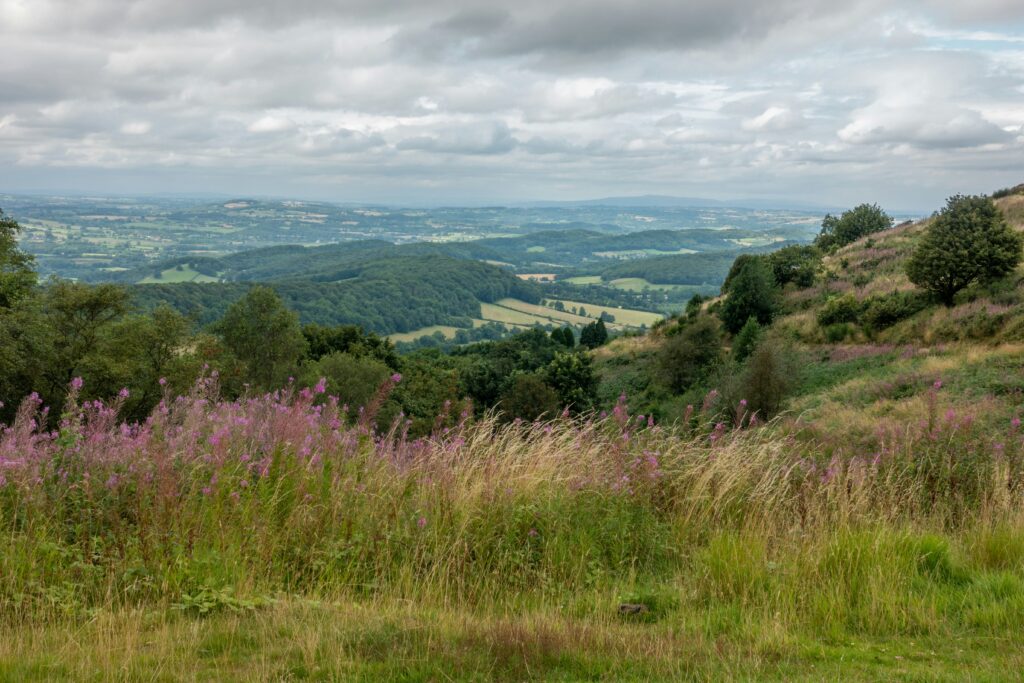
Summary: This Area of Outstanding Natural Beauty offers gentle ridge walks with panoramic views over the English countryside.
- Difficulty level: Easy to moderate (perfect for families and beginners).
- What makes the walk unique: Its central location and inspiration for Victorian poets like W.H. Auden.
- Best time to go: Spring for vibrant greenery or autumn for golden views.
- Food/restaurants/amenities nearby: Enjoy traditional cream tea at The Bluebell Inn in Malvern.
- Travel/parking info: Parking is available at several trailheads, including British Camp.
- Travel recommendations: Easily accessible by train from Worcester and Birmingham.
Norfolk Coast Path
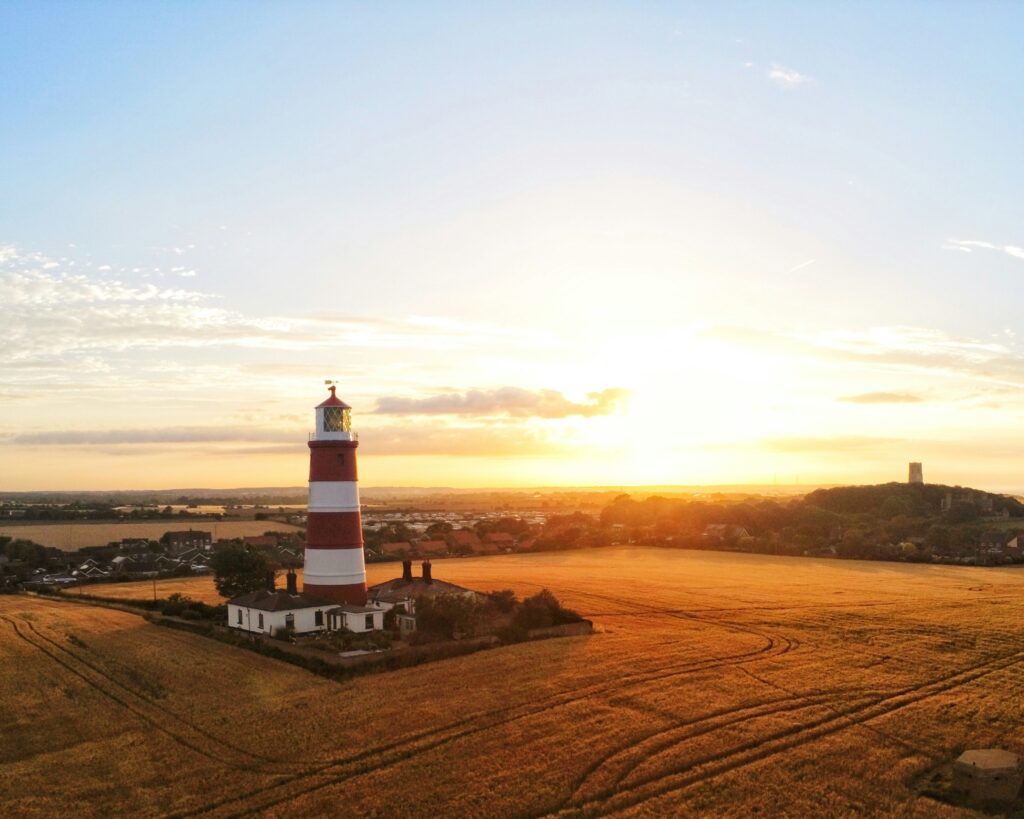
Summary: A peaceful coastal walk featuring quiet beaches, salt marshes, and quaint seaside villages.
- Difficulty level: Easy (flat terrain suitable for all fitness levels).
- What makes the walk unique: The serene beauty of the North Norfolk coastline and abundant birdlife.
- Best time to go: Summer for warm weather or winter for peaceful solitude.
- Food/restaurants/amenities nearby: Enjoy fresh seafood at The White Horse in Brancaster Staithe.
- Travel/parking info: Parking is available in seaside towns like Hunstanton and Wells-next-the-Sea.
- Travel recommendations: Public transport is available, but cycling is another great way to explore this stretch.
Glen Nevis and Steall Waterfall
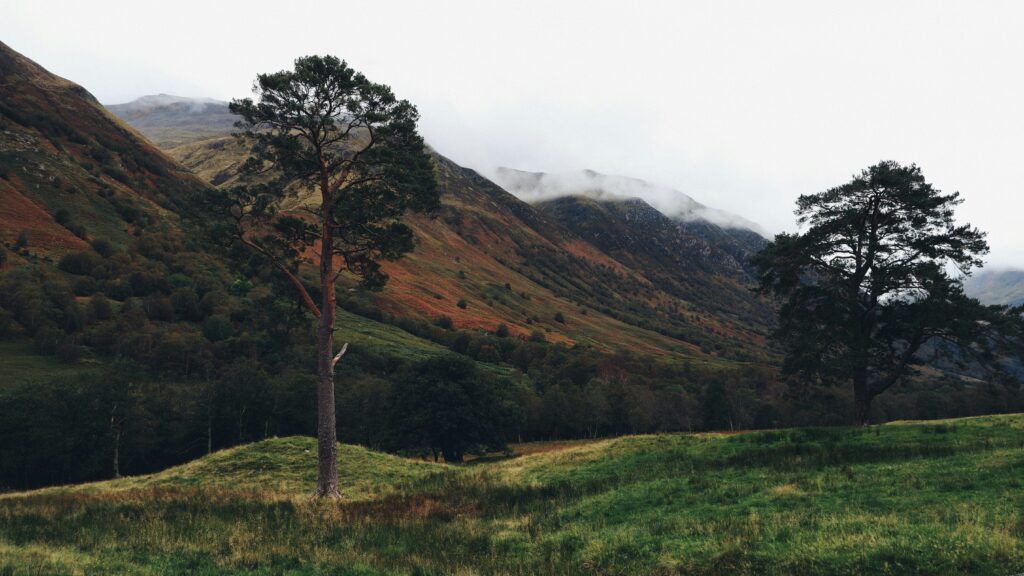
Summary: This short but rewarding hike leads to one of Scotland’s tallest waterfalls, set in a stunning glen.
- Difficulty level: Easy to moderate (short distance but involves some rocky paths).
- What makes the walk unique: The dramatic Steall Falls and surrounding views of the Ben Nevis massif.
- Best time to go: Summer for long daylight hours or early autumn for stunning colors.
- Food/restaurants/amenities nearby: Visit The Ben Nevis Inn for a post-hike meal.
- Travel/parking info: Parking is available at the Glen Nevis visitor center.
- Travel recommendations: The area is well-connected by buses from Fort William.
Essential Hiking Checklist
Preparation is key when embarking on a hike in the UK. The weather is unpredictable, and trails vary in difficulty. Use this checklist to ensure a safe and enjoyable journey:
Clothing
- Waterproof jacket and trousers
- Insulating layers for colder days
- Sturdy, waterproof hiking boots with good grip
- Hat, gloves, and scarf for winter hikes
- Lightweight and breathable clothing for summer
Gear
- Backpack (20–30 liters for day hikes)
- Map and compass (even if you use GPS apps)
- Trekking poles for stability on steep or uneven terrain
- Headlamp or flashlight with spare batteries
Food and Hydration
- At least 2 liters of water per person
- High-energy snacks such as nuts, protein bars, and dried fruits
- Lightweight meals for longer hikes
Emergency Supplies
- First aid kit (bandages, antiseptic wipes, and pain relief)
- Emergency blanket
- Whistle for signaling
- Fully charged mobile phone and power bank
Extras
- Sunglasses and sunscreen
- Trash bag to leave no trace
- Camera or smartphone for capturing scenic views
The History and Cultural Significance of UK Hiking Trails
Hiking in the UK is not just a recreational activity—it’s a journey through history and culture. Many of the country’s most popular trails are steeped in stories of ancient civilizations, literary inspiration, and even political activism.
- Hadrian’s Wall Path: Stretching across northern England, this trail follows the ancient Roman frontier, built around 122 AD. Hiking along it provides a glimpse into the Roman Empire’s influence in Britain, with milecastles, forts, and museums along the route.
- Kinder Scout: In 1932, this location in the Peak District became the site of the famous “Mass Trespass,” a protest by hikers demanding public access to private land. This act played a crucial role in establishing the “right to roam” and the creation of National Parks in the UK.
- The Cotswold Way: This route reflects the timeless charm of rural England. Passing through villages with roots in medieval and Roman times, it encapsulates the pastoral heritage of the nation.
- The South West Coast Path: Once a patrol route for customs officers hunting smugglers, this path now offers a blend of history and natural beauty, tracing the evolution of England’s coastal communities.
- Snowdonia National Park: Home to Mount Snowdon, this area is steeped in Welsh folklore. Legend has it that King Arthur battled giants here, and the peak’s name, “Yr Wyddfa,” translates to “the burial place.”
Each trail carries the weight of its history, connecting hikers not just to the land but to the stories and struggles that have shaped it.
How to Plan Your UK Hike
Proper planning can make your hiking experience both enjoyable and safe. Follow these steps to ensure a successful trip:
1. Research the Trail
- Determine the trail’s difficulty, length, and terrain.
- Check for any seasonal closures or access restrictions.
- Use reliable sources like National Trails, AllTrails, or local hiking forums for up-to-date information.
2. Pack Appropriately
- Adjust your gear to the weather and season (e.g., waterproofs for rain, sunblock in summer).
- Ensure you have enough water and snacks for the trail duration.
- Always carry a map and compass as backup, even if you use GPS.
3. Check the Weather
- UK weather can change rapidly, especially in mountain regions.
- Use reliable weather apps like Met Office or BBC Weather for forecasts.
4. Plan Your Transport and Accommodation
- Research parking facilities at trailheads; some may require advance booking (e.g., Pen-y-Pass in Snowdonia).
- Consider staying in nearby villages to shorten travel times to the trail.
- If using public transport, check bus or train schedules to avoid being stranded.
5. Inform Someone
- Share your hiking plan, including your route and estimated return time, with a trusted person.
6. Be Flexible
- Weather or trail conditions might require adjustments to your plan. Always prioritize safety over completing a specific route.
Essential Tips for UK Hikers
Respect Nature
- Stick to marked paths to protect delicate ecosystems.
- Avoid disturbing wildlife and always close gates behind you.
Pack Light but Smart
- Carry essential items only to reduce strain, but don’t compromise on safety gear like first-aid kits or waterproofs.
Start Early
- Begin your hike early to avoid crowds and maximize daylight, especially in winter months.
Hydrate and Snack
- Drink water regularly, even in cooler weather, and keep your energy up with small snacks.
Dress in Layers
- The UK’s weather is unpredictable. Wear layers you can easily add or remove as conditions change.
Leave No Trace
- Take all your rubbish with you, and avoid picking flowers or disturbing natural habitats.
Stay Safe
- Watch out for slippery paths, especially after rain.
- If you’re hiking in remote areas, make sure you have a fully charged phone and a power bank.
FAQs About Hiking in the UK
Q: Are dogs allowed on UK trails?
A: Many trails are dog-friendly, but restrictions may apply during lambing season or in nature reserves. Always check local signage and keep dogs on a leash where required.
Q: Do I need permits to hike?
A: Most UK trails don’t require permits, but some areas, like private estates or certain conservation zones, may have access fees or restrictions.
Q: What’s the best season for hiking in the UK?
A: Spring (March to May) and autumn (September to November) offer pleasant weather and fewer crowds. Summer is great for long daylight hours, while winter can be stunning but requires more preparation.
Q: What should I do if the weather turns bad?
A: Be prepared to turn back. Always carry waterproof gear, and seek shelter if conditions worsen significantly. Use a map and compass to navigate in poor visibility.
Q: Are there guided hikes available?
A: Yes, many National Parks and local tour operators offer guided hikes. These can be especially useful for more challenging trails or for learning about the area’s history and ecology.

